Order Anura Higher classification Hoplobatrachus | Phylum Chordata Scientific name Hoplobatrachus tigerinus Rank Species | |
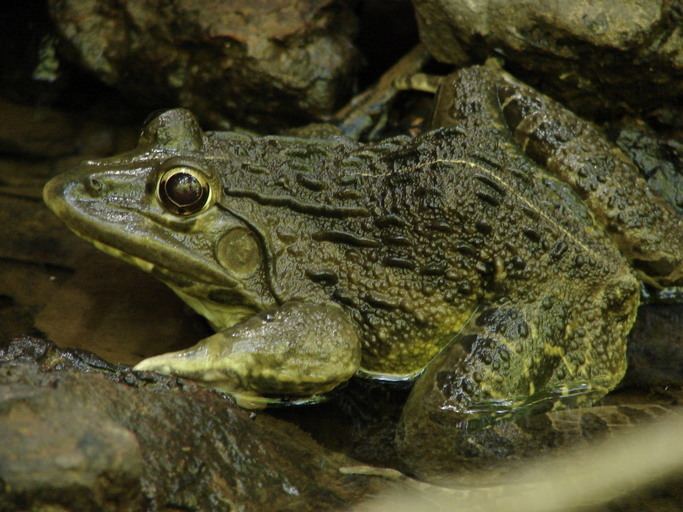 | ||
Similar | ||
How do frogs mate indian bullfrog hoplobatrachus tigerinus
Hoplobatrachus tigerinus, the Indus Valley bullfrog or Indian bullfrog, popular name Asian bullfrog, Asean bullfrog or Asia bullfrog, is a large species of frog found in Myanmar, Bangladesh, India, Pakistan, Afghanistan, and Nepal. It has been introduced in Madagascar, where it is now a widespread invasive species.
Contents
- How do frogs mate indian bullfrog hoplobatrachus tigerinus
- Indian bullfrog hoplobatrachus tigerinus
- Description
- Cultivation
- References
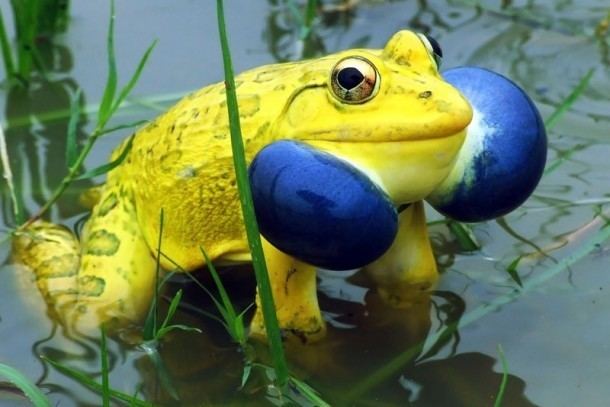
Indian bullfrog hoplobatrachus tigerinus
Description
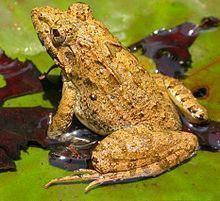
They are found in India, Bangladesh, Pakistan, Nepal, Myanmar, Afghanistan, and Sri Lanka. They are also found in the Maldives and Madagascar.
They prefer freshwater wetlands and aquatic habitats. Generally they avoid coastal and forest areas.

Rana tigrina is mostly solitary and nocturnal in nature. They inhabit holes and bushes near permanent water sources. The frog does not stay in water for a long time; it spends most of its time hiding and feeding in surrounding vegetation.
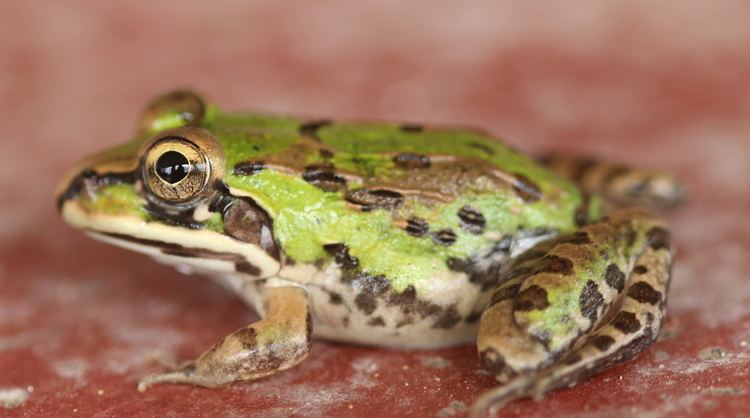
They feed on various type of insects, invertebrates, mice, shrews, young frogs, earthworms, roundworms, juvenile snakes, and small birds.

Vomerine teeth in two strong oblique series commence from the inner anterior angle of the choanae; lower jaw with two not very prominent bony processes in front. Head moderate; Snout more or less pointed; canthus rostralis obtuse; nostril a little nearer to the end of the mouth than to the eye; interorbital space narrower than the upper eyelid; tympanum distinct, about two thirds the size of the eye. Fingers rather short, first extending beyond second; toes moderate, obtuse, nearly entirely webbed ; a much developed membranaceous fringe along the fifth toe; sub-articular tubercles moderate; inner metatarsal tubercle very variable, small and blunt, or (var. ceylanica, Ceylon and S. India) nearly as long as the inner toe, strongly compressed, crescent shaped, shovel-shaped; no outer tubercle, a tarsal fold. Tibio-tarsal articulation reaching the ear, the eye, or a little beyond. Skin of back with longitudinal folds; a strong fold above the tympanum. Green or olive above, with dark spots; often a light vertebral line. Male with two subgular vocal sacs, conspicuous externally by folds of the skin on the sides of the throat; these regions generally blackish.
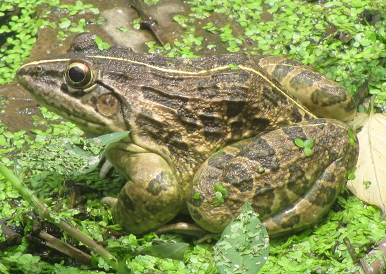
It is essentially aquatic, and is said, to jump over the surface of the water much in the same way as on land when frightened,.
From snout to vent 6.5 inches.
This species is classified as Least Concern in the IUCN red list.
Cultivation
Captive farming of this species as a food source, and also of the American bullfrog (Rana catesbeiana), started in Thailand in the 1990s.
